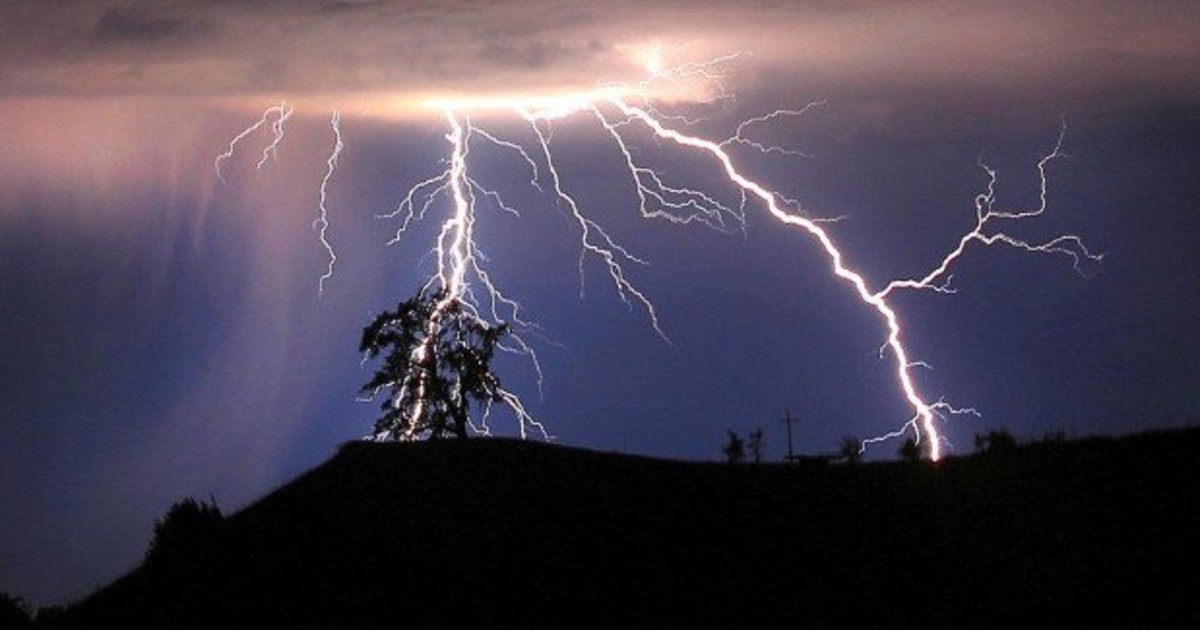Predicting the weather is akin to picking next week’s lotto numbers. The reason? There are quite a few, from the length of the forecast, the technology and people involved, and, of course, Mother Nature.
Not all weather forecasts are inaccurate, of course; with technological advances, predicting the weather 3 to 5 days ahead is getting better. Most five-day forecasts can be correct around 90% of the time. Stretch that out to ten days, though, and you’re looking at a 50% accuracy rate—if that.
Here’s a look at the reasons why longer-term weather forecasts are so inaccurate.

Mother Nature Is Random
The atmosphere is chaotic and in a constant state of flux. What this means is that the slightest unexpected dip in temperature or an increase in wind can significantly impact the weather a few days from now. Storms that seem to appear out of nowhere happen because of the state of the atmosphere.
Weather forecasting means looking at the future; this can be done by relying on past information. By looking for patterns in that previous data, it’s sometimes possible to predict what might happen. The challenge is that the chaotic atmosphere doesn’t always follow the past.
The challenge with predicting a weather event, like a hurricane, is that its life cycle can vary from one hour to one month. In that time, it can change course or die out as fast as it began. While weather satellites (see link below) can track these, their unpredictability doesn’t allow for much accuracy.
How Satellites Are Used to Predict Weather
Numerous satellites around the world are used to help predict the short-term weather. National Aeronautics and Space Administration (NASA), the National Oceanic and Atmospheric Administration (NOAA) Satellite Information Service, and the US Air Force manage a fleet of weather satellites.
Geostationary Operational Environmental Satellites
Geostationary Operational Environmental Satellites (GOES) follow the Earth’s orbit and are positioned 22,300 miles above the equator. Every 15 minutes, they take photos of weather patterns and provide us with near-instant weather scenarios.
Polar Operational Environmental Satellites
Polar Operational Environmental Satellites (POES) are used to make future predictions. They do a 360-degree orbit around Earth’s two poles in a clockwise direction. As each journey only takes 15 minutes, they provide 14 reports daily from opposite ends of the planet. The data produced can inform meteorologists of tropical storms as they build and identify where they’re headed.
How a Meteorologist Fits in
Becoming a meteorologist requires specialist training. As a minimum, a four-year Bachelor of Meteorology and Atmospheric Science must be completed. Experts in this field can work in various roles, including weather forecasting.
Meteorologists take information from various sources, including the GOES and POES, and then run computerized numerical weather models and consider all the variables before making their predictions. It requires a combination of models, and more seasoned specialists with more experience may be better at getting this right.
Some are better at predicting weather patterns, while others are better at determining lead times. Meteorologists with years of training can predict weather patterns better than computers can alone.
Forecasting the weather is an attempt to ‘predict’ what will happen in the future, and with too many variables, it’s unlikely ever to be correct 100% of the time.
Weather Sites and Apps Limited Accuracy
Google ‘weather in my city,’ and you’ll discover many sites promising the most accurate results. The Forecast Advisor site keeps track of the most visited weather pages and apps and records their accuracy on a monthly and yearly basis.
According to Forecast Advisor, The Weather Channel got it right 92% of the time in 2022, yet others scraped in at just over 60%. How can some be more accurate than others?
It comes down to where they’re getting their data from. The Weather Channel is an IBM company and is recognized worldwide. It likely has access to more advanced satellites like the POES and meteorologists with more experience than other sites with limited resources.
Many sites rely on computer data alone to produce their results, without an expert even glancing at it, hence the lower success rate.
Weather Compared to Other Random Things
Weather patterns are incredibly random and almost impossible to predict with complete accuracy, but they’re not the only unplanned things people encounter daily.
Many accidents resulting in injury are considered random; being momentarily blinded by a light source and tripping over something is a common chance occurrence. Games of chance that are based on algorithms also produce random results. For example, lottery results might show patterns but are ultimately completely random. Likewise, Bonanza slot is an iconic candy-themed game with a scatter feature whose three symbols are impossible to predict.
The universe likes to keep us all on our toes; that’s why predicting the weather more than a week away is about the same as guessing the results of a game of chance or figuring out that you’ll have an unplanned accident on the way home from work. However, while events like that will continue to be truly random, technological advances will hopefully get better and better at accurately predicting weather patterns.


